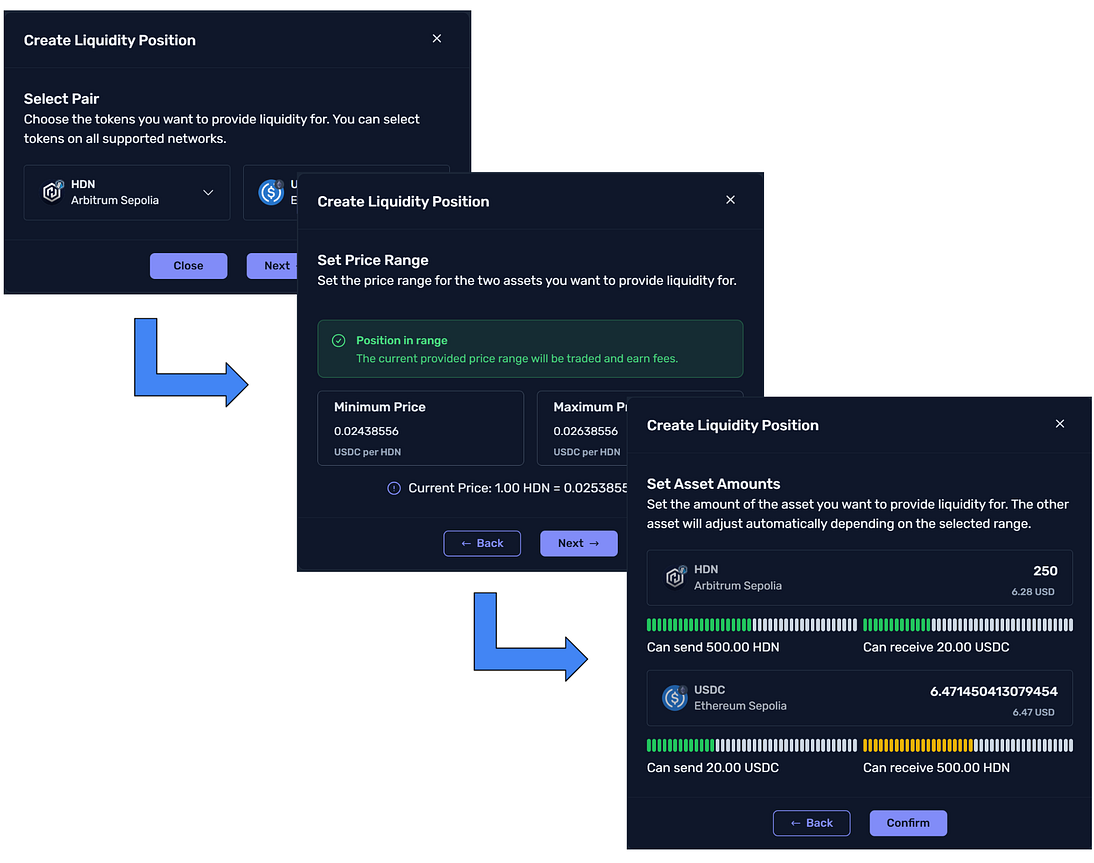Hydranet Monthly Recap #33 — March 2025

March has been a month of major progress for Hydranet, bringing us closer to an optimized and feature-rich trading platform. With one of the biggest Alpha updates to date, we’ve made progress in performance, user experience, and infrastructure stability, with swap times reaching an all-time low of just 0.4 seconds. Beyond technical advancements, key governance decisions have taken center stage, with two crucial DAO proposals shaping the future of Hydranet. Continue reading for more details!
Development in Full Swing
One of the most exciting milestones this month was the deployment of a massive Alpha update, one of the biggest yet. This update resolved numerous reported bugs, improved UI consistency, and introduced infrastructure enhancements. As a result, swap times have been further optimized, now clocking in at 0.4 seconds under ideal conditions!
To support these improvements, we tackled several challenges, including:
- Resolving UI issues related to channel liquidity rentals
- Fixing a Lightning Network bug that affected opening multiple Lightning channels
- Ensuring channel statuses update correctly after channel opening to avoid unusable channels
- Adding on-chain transaction details for rental transactions
- Implementing pending transaction visibility before confirmation on the blockchain
- Fixing sorting issues in transaction history
- And many more improvements!
Additionally, we introduced several new features:
- Ethereum and Arbitrum Sepolia network support, while removing Ethereum Holesky (which is scheduled for deprecation in September 2025)
- Order merging for partial orders, allowing multiple smaller orders with the same order ID to be combined, improving swap efficiency
- New logic for managing expired rental channels
- Liquidity tab, enabling users to create liquidity pools similar to on-chain DEXs like Uniswap
Before rolling out this update to Alpha testers, our team conducted extensive internal testing to ensure its functionality. The results have been promising, and we hope to expand the number of Alpha testers soon! If you haven’t signed up for the waitlist yet, now’s the time to get involved!
Along with the Alpha update, we’ve also introduced a new Liquidity Guide, detailing how users can provide liquidity through the Liquidity tab. The process is similar to traditional DEXs, but with some key differences: users need to ensure they have open channels with sufficient inbound and outbound liquidity and must remain online at all times to maintain liquidity provisioning. This requirement stems from our off-chain infrastructure, where both channel parties must be online to sign transactions for successful execution. To address common questions related to liquidity provisioning, we’ve also updated our FAQ section in the documentation. In the future, we aim to find a way to allow wallets to go offline after setting up liquidity, but our primary focus remains reaching mainnet!


Important DAO Decisions
March was a development-heavy month, but we also saw two major governance proposals put forth for voting.
As with all DAO votes, each proposal starts with a seven-day discussion period, followed by a five-day voting period in accordance with our governance procedures.
Proposal #34 — A New Token Contract
One major issue we’ve faced is the presence of warning messages and poor ratings on token and DEX screener platforms. The root cause? Our current proxy contract, which allows upgrades to our token contract if needed. While this upgradeability is strictly controlled, requiring a 3/6 multi-signature approval from our DAO representatives (multi-sig), it has raised concerns on screening and token tracker platforms.
Proposal #34 seeks to replace the existing proxy contract with a standard ERC-20 contract, eliminating upgradeability and aligning with common industry practices. By implementing this change now, we can avoid the increased complexity and disruption that would come with migrating to a new contract at a later stage, during which we aim to see increased traction with the launch of our platform on mainnet.
Proposal #35 — Allocating 25 Million HDN for Strategic Growth
Proposal #35 focuses on preparing Hydranet for mainnet by allocating 25 million HDN from the DAO Vault. The funds will be distributed through five consecutive snapshot votes, each allocating 5 million HDN. The transferred HDN will be stored in a dedicated multi-signature wallet for professional investment deals.
These assets will be used strategically to:
- Provide order book liquidity for the WebDEX
- Fund marketing campaigns to increase awareness and adoption
- Support ongoing development before and after the mainnet launch
Both of these proposals are significant milestones, and we encourage all community members to take part in shaping Hydranet’s future by casting their votes!